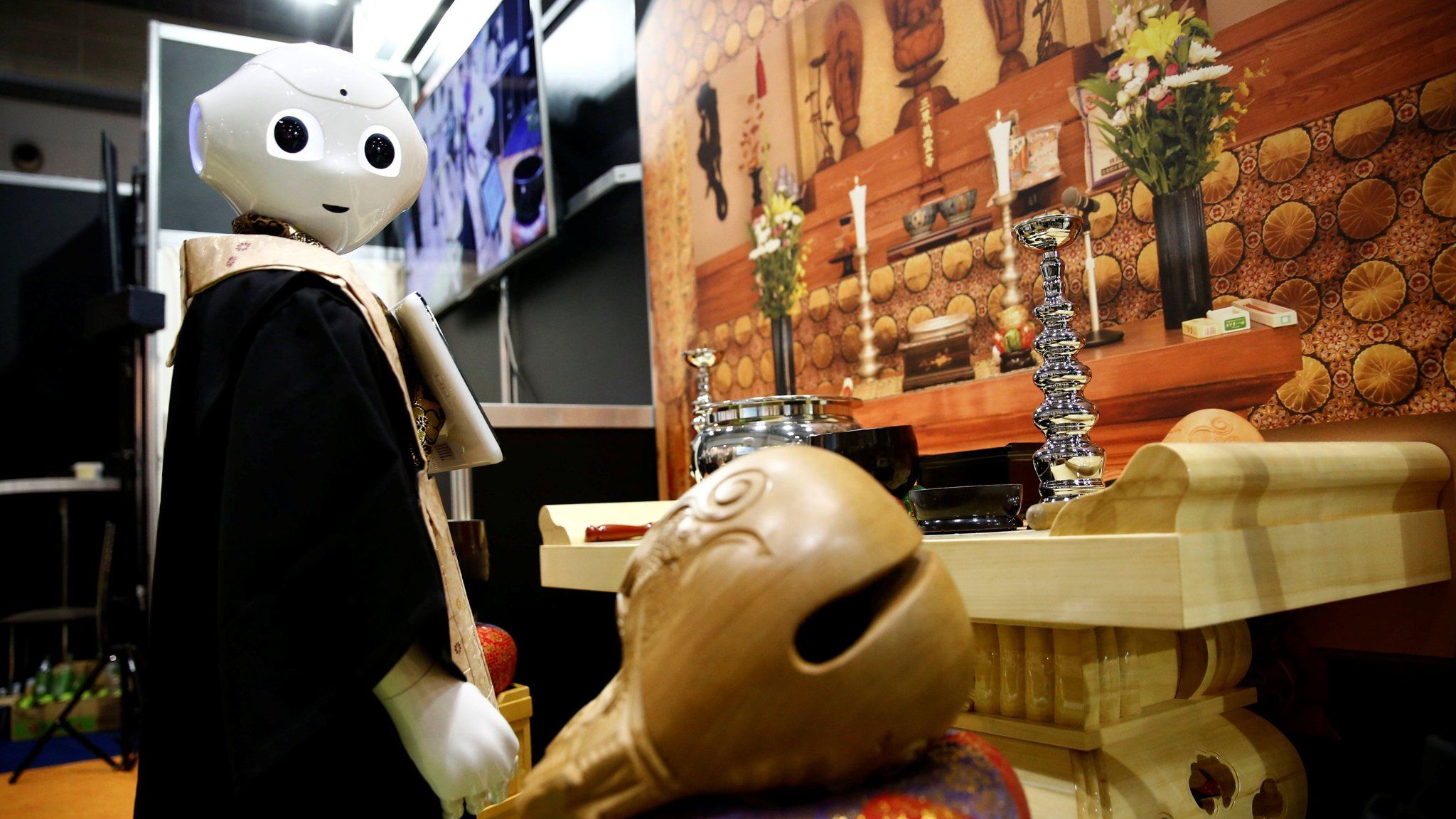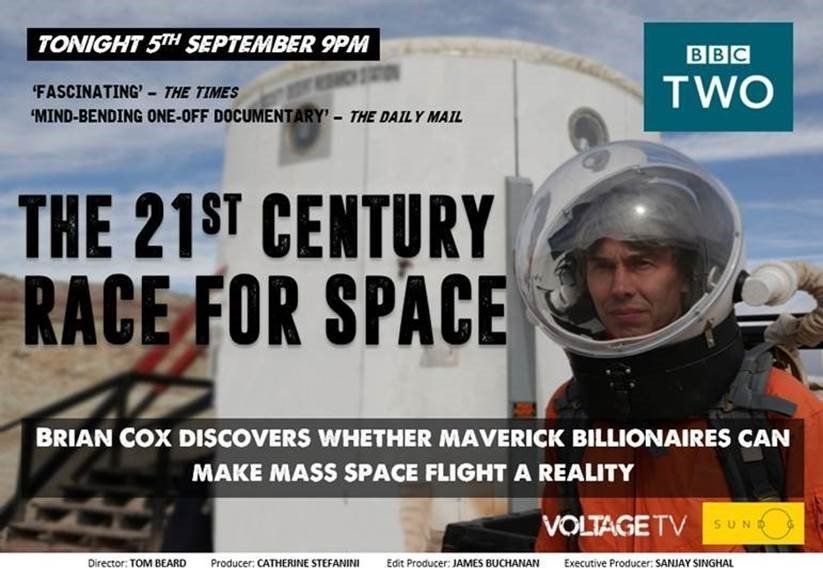Category: education – Page 187

Investors should wake up to Japan’s robotic future
Out of necessity, Japan has been pushing on the robotics frontier for years. As a result, the proliferation and embrace of robots goes well beyond the Japanese factory floor to include schools, hospitals, nursing homes, airports, train stations and even temples.
Unfavourable demographics are spurring innovation — and investment opportunities.

Letting teens sleep in would save the country roughly $9 billion a year
The United States would realize roughly $9 billion a year in economic gains by instituting a simple, nationwide policy change: starting public school classes no earlier than 8:30 a.m.
That’s according to an exhaustive new study by the Rand Corporation, the first of its kind to model the nationwide costs and benefits of later school start times.
M. Fossel — How to Reverse Aging
Full Interview ► https://goo.gl/PvUjjU
Michael B. Fossel, M.D., Ph.D. (born 1950, Greenwich, Connecticut) was a professor of clinical medicine at Michigan State University and is the author of several books on aging, who is best known for his views on telomerase therapy as a possible treatment for cellular senescence. Fossel has appeared on many major news programs to discuss aging and has appeared regularly on National Public Radio (NPR). He is also a respected lecturer, author, and the founder and former editor-in-chief of the Journal of Anti-Aging Medicine (now known as Rejuvenation Research).
Prior to earning his M.D. at Stanford Medical School, Fossel earned a joint B.A. (cum laude) and M.A. in psychology at Wesleyan University and a Ph.D. in neurobiology at Stanford University. He is also a graduate of Phillips Exeter Academy. Prior to graduating from medical school in 1981, he was awarded a National Science Foundation fellowship and taught at Stanford University.
In addition to his position at Michigan State University, Fossel has lectured at the National Institute for Health, the Smithsonian Institution, and at various other universities and institutes in various parts of the world. Fossel served on the board of directors for the American Aging Association and was their executive director.
Fossel has written numerous articles on aging and ethics for the Journal of the American Medical Association and In Vivo, and his first book, entitled Reversing Human Aging was published in 1996. The book garnered favorable reviews from mainstream newspapers as well as Scientific American and was published in six languages. A magisterial academic textbook on by Fossel entitled Cells, Aging, and Human Disease was published in 2004 by Oxford University Press.
Since his days as a teacher at Stanford University, Fossel has studied aging from a medical and scientific perspective with a particular emphasis on premature aging syndromes such as progeria, and since at least 1996 he has been a strong and vocal advocate of [telomerase therapy]] as a potential treatment of age-related diseases, disorders, and syndromes such as progeria, Alzheimer’s disease, atherosclerosis, osteoporosis, cancer, and other conditions. However, he is careful to qualify his advocacy of telomerase therapy as being a potential treatment for these conditions rather than a “cure for old age” and a panacea for age-related medical conditions, albeit a potential treatment that could radically extend the maximum human life span and reverse the aging process in most people. Specifically, Fossel sees the potential of telomerase therapy as being the single most effective point of intervention in a wide variety of age-related medical conditions. His new book, The Telomerase Revolution, (BenBella, 2015) gives a careful explanation of aging, age-related diseases, and the prospects for intervention, including upcoming human trials.
Unexpected Futurist: Mark Twain, Tesla, and a Worldwide Visual Telephone System
When one thinks of Mark Twain, one thinks of folksy wit, Huckleberry Finn, Tom Sawyer and the Mississippi River. Twain’s work immortalized the rapidly changing United States of the 1800s. But in his personal life, Twain often preferred the future to nostalgia, supporting women’s suffrage and civil rights, and frequently being contemptuous of what he considered to be the absurd and corrupt values of the past. He harbored a long running fascination with technology and new gadgets, and frequently invested in the latter — albeit with spotty success, at best. But Twain cemented his becoming an honorary futurist via his long friendship with inventor and Mad-scientist archetype Nikola Tesla.

‘Inspirational’ robots to begin replacing teachers within 10 years
R obots will begin replacing teachers in the classroom within the next ten years as part of a revolution in one-to-one learning, a leading educationalist has predicted.
Sir Anthony Seldon, Vice-Chancellor of the University of Buckingham, said intelligent machines that adapt to suit the learning styles of individual children will soon render traditional academic teaching all but redundant.
The former Master of Wellington College said programmes currently being developed in Silicon Valley will learn to read the brains and facial expressions of pupils, adapting the method of communication to what works best for them.

The Artificial Intelligence Race: The AI Documentary
Artificial Intelligence (AI) is a science and a set of computational technologies that are inspired by—but typically operate quite differently from—the ways people use their nervous systems and bodies to sense, learn, reason, and take action. While the rate of progress in AI has been patchy and unpredictable, there have been significant advances since the field’s inception sixty years ago…
Toby Walsh, Professor Artificial Intelligence, University of NSW Sydney “There’s lots of AI already in our lives. You can already see it on your smartphone every time you use Siri, every time you ask a lexer a question, every time you actually use your satellite navigation. You are using one of these algorithms. You are using some AI that’s recognizing your speech, answering questions, giving you search results recommending books for you to buy on Amazon. They’re the beginnings of AI everywhere in our lives.”
Unexpected Futurist: Ben Franklin envisions 2776 — and Cryonics
In Unexpected Futurist, we profile the lesser known futurist side of influential individuals. This episode’s unexpected time-traveler: Benjamin Franklin. Ben Franklin was an inventor, observer, electricity pioneer, and serial experimenter, so it’s not entirely surprising he looked to the future. But it turns out he was looking to the far, far future. In 1780 he wrote a letter to a friend in which he lamented that he was born during the dawn of science.
#G4C12: Rants
http://gamesforchange.org/festival2012
How to “Get Better”: Approaches to LGBTQ-relevant Video Games
Presented by: Robert Yang
Given today’s attempts at LGBTQ outreach and advocacy, e.g. the “It Gets Better” campaign, it makes sense to explore more queer-relevant content through engaging and thoughtful video game design. So how do we get LGBTQ content “right”? For that matter, what does “LGBTQ content” even entail? What are the ways that video games imply notions of gender and sexuality through their graphics, sounds, interfaces, and mechanics? Listeners will take away design techniques to integrate socially relevant content into games, ethical concerns in doing so, and a very brief overview of LGBTQ issues.
Crafting Science Learning Games that People Will Play — Two Voices, One Goal.
Presented by: Jodi Asbell-Clarke, Scott Kirk
Jodi and Scott will tell a tale of woe, hope, and compassion about co-developing educational games. With a dual mission, entertainment and learning, the games developed by EdGE and GameGurus are walking the fine line of research and commercial development. The vastly different perspectives of an educational researcher and a commercial game designer present challenges, tension, grief, and ultimately opportunities for new types of games that can make a difference.
Jodi will explain the need for grounding the game in solid pedagogical design so that research measurements will be effective and convincing to funders and educational systems. Scott tries to fit those constraints into the world of development timelines, budgets, and profit margins. It all works when both teams have the creative spark, worthy goals, and a lot of energy.
If coding games is the new literacy, then… presented by: idit harel caperton.